

 |
 |
 Looking up, you notice that the light is growing dimmer and realize you better hurry back to camp before anyone starts to worry. Brushing yourself off and nodding goodbye to the playful squirrels who scatter with your movement, you start off. Suddenly you stop and realize you don't recognize where you are. Your heart begins to pound as you realize you might be lost. Sweat beads up on your forehead as you try to remember which way to go. Shadows darken as daylight ebbs away. How could you have gotten lost? What are you going to do? Somehow you've got to get back to camp!
Looking up, you notice that the light is growing dimmer and realize you better hurry back to camp before anyone starts to worry. Brushing yourself off and nodding goodbye to the playful squirrels who scatter with your movement, you start off. Suddenly you stop and realize you don't recognize where you are. Your heart begins to pound as you realize you might be lost. Sweat beads up on your forehead as you try to remember which way to go. Shadows darken as daylight ebbs away. How could you have gotten lost? What are you going to do? Somehow you've got to get back to camp!
STOP! Now is not the time for panic. Right now, you're in no danger. You may not know exactly where you are, but misplacing yourself is only a problem if you allow it to become one. Even the most experienced woodsman has found himself disoriented on occasion, it is nothing to be embarrassed about. The difference is that he knows it is not a serious problem, yet, and it won't become one because he is prepared with knowledge and some basic tools. Now, you won't have to worry either, because we're going to teach you how to survive an unexpected stay in the wilderness.
The above scenario is only one of the innumerable ways that people find to place themselves in a wilderness survival situation, often through no fault of their own. How well things go will be determined by how well prepared you are. Some basic survival knowledge can turn it into little more than an impromptu camping trip.
In almost any emergency, but especially in a survival situation, it is critical that you first S.T.O.P.
"S" is for Stop. Take a deep breath, sit down if possible, calm yourself and recognize that whatever has happened to get you here is past and cannot be undone. You are now in a survival situation and that means . . ."T" is for Think. Your most important asset is your brain. Use it! Don't Panic! Move with deliberate care. Think first, so you have no regrets later. Take no action, even a foot step, until you have thought it through. Unrecoverable mistakes and injuries, potentially serious in a survival situation, occur when we act before we engage our brain. Then . . .
"O" is for Observe. Take a look around you. Assess your situation and options. Consider the terrain, weather and resources. Take stock of your supplies, equipment, surroundings, your personal capabilities and, if there are any, the abilities of your fellow survivors.
"P" is for Plan. Prioritize your immediate needs and develop a plan to systematically deal with the emergency and contingencies while conserving your energy. Then, follow your plan. Adjust your plan only as necessary to deal with changing circumstances.
YOU WILL SURVIVE!
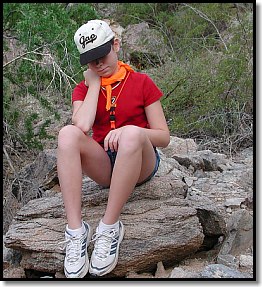 It's absolutely critical that you STAY PUT! If lost, the odds that you will find your way out are slim. If injured, you'll only make it worse by trying to travel. If it's just gotten late, you stand a good chance of getting lost in the darkness. However, if you stay put you will be found, likely in only a few hours. Don't make it harder for searchers by moving around.
It's absolutely critical that you STAY PUT! If lost, the odds that you will find your way out are slim. If injured, you'll only make it worse by trying to travel. If it's just gotten late, you stand a good chance of getting lost in the darkness. However, if you stay put you will be found, likely in only a few hours. Don't make it harder for searchers by moving around.
If you are with another person or a group, always stay together. Do not separate, do not split up, and never move out of sight or hearing of each other.
When you are noticed missing, others will start to search for you immediately. Before long a lot of volunteers and professional search and rescue people will join in the search. All you have to do is stay safe and stay put and they will find you.
There are only a few fundamentals to wilderness survival. You must maintain your body temperature at or near 98.6 degrees (fahrenheit). Too cold (hypothermia) or too hot (hyperthermia) and you can die. You need to conserve energy. Don't waste it by "doing" before "thinking." Water is vital for your body and mind to function properly. You need both working as good as possible. Finally, remember that your only responsibilities are to stay alive, and if at all possible, make yourself easier to find by actively working at attracting attention to yourself.
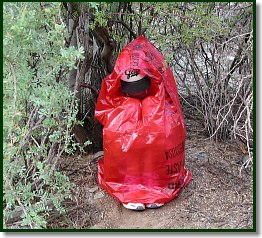 Shelter is a basic necessity. Find or make temporary shelter. Heat and cold can sap the lifeblood from you very quickly. Wind, rain, snow or other inclement weather hastens the process. Pick the best convenient location for your shelter, as dry as possible in wet or cold weather, and away from natural hazards. Don't go far to find something better or perfect, make do with the best you can find right where you are.
Shelter is a basic necessity. Find or make temporary shelter. Heat and cold can sap the lifeblood from you very quickly. Wind, rain, snow or other inclement weather hastens the process. Pick the best convenient location for your shelter, as dry as possible in wet or cold weather, and away from natural hazards. Don't go far to find something better or perfect, make do with the best you can find right where you are.
Your shelter can be as simple as sitting under the overhanging branches of a large tree or rock outcrop. Beneath the bottom branches of a large evergreen there is often a clear dry area, even in heavy snow. Avoid sitting on the bare ground or snow. Sit or lay on gathered small branches or shrubbery or on a downed tree for insulation.
A large garbage bag (a bright color is best, but any will do) is a very effective, inexpensive and compact personal emergency shelter or poncho that will fit in your pocket. Always carry one or two when you go off into the wilderness. Use the garbage bag to cover yourself and to keep heat in and the weather out.
To use, hold the bag upside down and go to one of the corners (a bottom corner, but now on top as you hold it), drop down about eight inches along the crease, and cut or tear a slit or hole only big enough for your face. Pull the bag over your body so that the corner rests on top of your head and your face sticks through the hole. Be sure to keep your head out where you can breath, you can suffocate inside the plastic if it covers your mouth and nose. If you have another bag and you're tall enough so one bag won't cover you completely, pull the other bag up from your feet. If you can, stuff the bags and your clothing with dry leaves for added insulation, but be careful not to introduce any unwelcome pests into your improvised shelter.
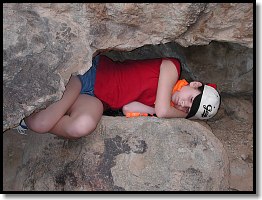 You can also use the bag as a small shade tarp, if the sun is a problem. A cap or hat is always useful to keep you head dryer, and warm or shaded, as appropriate.
You can also use the bag as a small shade tarp, if the sun is a problem. A cap or hat is always useful to keep you head dryer, and warm or shaded, as appropriate.
Use a tree, downed tree or piled up snow to break any wind. Curl into a tight ball to conserve heat. If there is more than one person, huddle together for warmth. In hot sunny weather, seek shade. If the ground is soft and you can do so without overexerting yourself and wasting precious water, scoop out a hollow in the shade, it can be 30 degrees cooler 12 inches below the surface. Once you have shelter, stay there. If you've taken shelter where it might be hard for anyone to see you, try to leave some sign or marker, sticks or some rocks, out in the open pointing to your shelter.
The more you can do to attract attention to yourself, the quicker someone will find you. The way to do this is by making lots of noise and by making yourself easy to see. You can be hard to see when wearing dark clothing, so it's always a good idea to wear bright colors when you go out. If you hear a helicopter, lie down in a clear dry space to make the biggest possible target for them to see.
If you are rested, feel up to it and there is a clearing, make a big "X" or "SOS" in the dirt or snow using your feet or a stick to scrape the dirt or stomp the snow down, broken branches and shrubs or rocks. Contrast and size are the keys to effective ground signals. If there is enough room, the letters should be 12 feet tall with lines at least two feet wide.
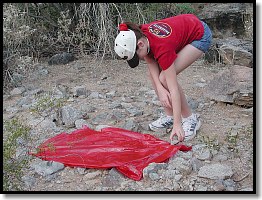 If you have something to use as a flag (an excellent reason to carry a brightly colored bandanna with you, it also has many other uses), that will be far more effective than your arms and hands alone. If you must use your hands alone, always wave wildly with both hands in an emergency situation. You don't want to be mistaken for somebody just giving a friendly wave.
If you have something to use as a flag (an excellent reason to carry a brightly colored bandanna with you, it also has many other uses), that will be far more effective than your arms and hands alone. If you must use your hands alone, always wave wildly with both hands in an emergency situation. You don't want to be mistaken for somebody just giving a friendly wave.
Most survivors are found by ground search teams and a whistle is the most effective
signaling device. A whistle is far superior to shouting because your voice just doesn't carry very far, especially in the woods. The whistle will be heard for 1/2 to 2 miles or even more in the wilderness where your voice may only carry for a few hundred feet, at best. You will also be able to signal for much longer periods of time, whereas your vocal cords will give out very quickly. You should never leave home without a whistle hung around your neck.
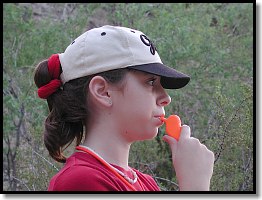 The shrill and unmistakable blast of a whistle repeated three times is a universal signal for help and will definitely attract the attention of anyone within earshot. Blow three clear blasts, pausing for a few seconds between each, then wait for five minutes and repeat until you are rescued. If you hear a whistle, respond immediately with three blasts every time. If you don't have a whistle, you can make a loud signal by banging two rocks together or beating on a dead tree with a stick or rock (but, be careful you don't hurt yourself or that the tree or branches don't fall on you if it is still standing).
The shrill and unmistakable blast of a whistle repeated three times is a universal signal for help and will definitely attract the attention of anyone within earshot. Blow three clear blasts, pausing for a few seconds between each, then wait for five minutes and repeat until you are rescued. If you hear a whistle, respond immediately with three blasts every time. If you don't have a whistle, you can make a loud signal by banging two rocks together or beating on a dead tree with a stick or rock (but, be careful you don't hurt yourself or that the tree or branches don't fall on you if it is still standing).
At night, your greatest fear is likely the result of an overactive imagination fed by the TV and movies you have seen. While the sounds of the wilderness at night may be unfamiliar, there's nothing out there that has any in interest in harming you. If you think you hear an animal nearby, yell, make lots of noise or blow your whistle. If it's an animal, it will run off. If the noise is searchers, you have been found.
For the limited length of time you might be out, water is a lot more important for you than food. It's always a good idea to have at least a quart of water with you at all times, more is better, especially in the desert.
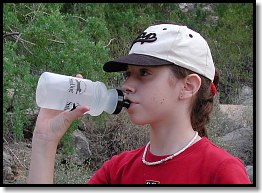 The best place to store water is in your stomach, so don't be afraid to drink what you have. Don't drink to excess, but if you have water, drink it when you feel the need. If you don't have any water, keep from sweating and breath through your nose to retain as much as you can.
The best place to store water is in your stomach, so don't be afraid to drink what you have. Don't drink to excess, but if you have water, drink it when you feel the need. If you don't have any water, keep from sweating and breath through your nose to retain as much as you can.
While it is best to purify water found in the wilderness before drinking, don't let a lack of purification stop you drinking from a stream or spring, as long as the water looks reasonably clear. Keeping your body fluids at a safe level (hydrated) is more important than the slim chance you might catch some bug from the water. There's nothing you can get from the water that a doctor can't easily take care of. Do not eat snow to obtain water, it will just make you colder.
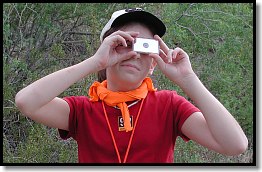 Improvisation, the ability to use things for other than what they were originally designed for, is an important survival skill. It's not what things were that's important, it's what they can become, what they can be used for. Using a garbage bag as a personal emergency shelter is an example of improvisation.
Improvisation, the ability to use things for other than what they were originally designed for, is an important survival skill. It's not what things were that's important, it's what they can become, what they can be used for. Using a garbage bag as a personal emergency shelter is an example of improvisation.
Think of your personal belongings and the natural environment as your own private wilderness equipment store. With a little thought and effort, you can improvise everything you need to survive.
The five rules of improvisation are:
- Determine what you really need.
- Inventory your available materials, man made and natural.
- Consider all alternatives before proceeding.
- Select the best one that takes the least amount of time, energy and materials.
- Do it, making sure it is safe and durable.
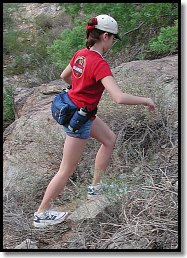 Always let someone responsible, preferably an adult, know where you are going and when you expect to return. If no one is around, at least leave a detailed note. That way, if you don't come back when expected, they can start a search and the searchers will know where to look for you. That makes their job much easier and shortens the time until you are found.
Always let someone responsible, preferably an adult, know where you are going and when you expect to return. If no one is around, at least leave a detailed note. That way, if you don't come back when expected, they can start a search and the searchers will know where to look for you. That makes their job much easier and shortens the time until you are found.
The only time the wilderness will bite back is if you panic and forget these basic survival lessons. An unexpected stay in the wilderness is not a big deal, if you keep you wits about you. Make yourself as comfortable as possible and wait for someone to find you or for morning when you can see well enough to continue your travels. As with most things in life, dealing with this sort of emergency is a lot easier if you already anticipated the possibility that you might someday find yourself in this situation and have equipped yourself to deal with it, both with knowledge and equipment. If you prepare yourself with a few bits of basic survival gear recommended here, then you will really be set to enjoy, not just survive, your unexpected wilderness adventure.
No matter how bad your situation, you can be sure others have survived far worse with much less. You must never give up. All you have to do is hold out until help arrives. You can do that. Don't panic. Use your brain. Hang in there. YOU WILL SURVIVE!
[Thanks to Sara White for modeling for the photos]
For additional information related to this subject on Equipped To Survive![]() :
:
(All of these "hug-a-tree" pages are worth a visit) The "hug-a-tree" program has proven very successful in imparting important survival information to very young children who are often inclined to do exactly the wrong thing when they get lost in the wilds. This program teaches them to stay put, "hug a tree," until they are rescued. If you have a young child, this program could prove to be a lifesaver.
|
| SELECT AND USE OUTDOORS AND SURVIVAL EQUIPMENT, SUPPLIES AND TECHNIQUES AT YOUR OWN RISK. Please review the full WARNING & DISCLAIMER about information on this site. |
Publisher and Editor: Doug Ritter
Email: Doug Ritter
URL:
http://www.equipped.org/kidprimr.htm
Revision: 14 April 3, 2005
![]()
Email to: [email protected]
|
© 1997 - 2005 Douglas S. Ritter & Equipped To Survive Foundation, Inc. All rights reserved. Check our Copyright Information page for additional information. |
Read the ETS Privacy Policy |